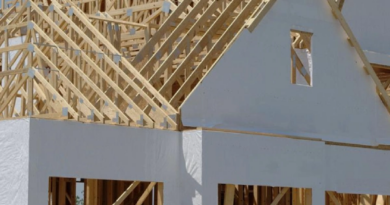Memory Production Logging: Technologies and Tools for Accurate Data Collection
Oil and gas production is a complex and data-intensive process, where every decision hinges on the accuracy of subsurface information. Memory production logging (MPL) has become a cornerstone technique that provides valuable insights into the performance of wells. It plays a critical role in evaluating the efficiency of extraction processes and diagnosing production issues.
What is Memory Production Logging?
Memory production logging is a type of downhole logging that records well performance data without requiring a continuous surface link during operations. The memory logging tool is deployed into the well, collects data, and is retrieved later for analysis. This technique is especially useful in remote locations or where real-time telemetry isn’t feasible.
Production logging measures parameters like pressure, temperature, flow rate, and fluid composition along the wellbore. The collected data helps in diagnosing well performance, identifying production issues such as water breakthrough, crossflow, or gas lift efficiency, and determining zonal contributions in a multi-zone completion.
Importance of Accurate Data Collection
Accurate data collection in oil and gas production is crucial for several reasons:
Optimizing Production: Accurate data helps operators understand the flow dynamics within the wellbore, enabling them to optimize production rates and enhance recovery.
Reservoir Management: Understanding reservoir behavior is key to maximizing the lifetime of a reservoir. MPL provides insights into how fluids are moving within the reservoir, allowing for better reservoir management and planning.
Identifying Issues: MPL can detect issues such as water or gas breakthrough, production logging tool anomalies, or other wellbore integrity problems. Early detection of these issues can prevent costly interventions and downtime.
Compliance and Reporting: Regulatory compliance often requires accurate reporting of well conditions. MPL provides the data needed to meet these requirements.
Technologies in Memory Production Logging
Memory production logging relies on several advanced technologies to ensure accurate and reliable data collection. Below are some of the key technologies involved:
1. Downhole Sensors
Downhole sensors measure various parameters such as temperature, pressure, and flow rates. Modern MPL tools often use multi-sensor arrays to capture a comprehensive dataset.
Temperature Sensors: These measure the temperature profile along the wellbore, providing insights into fluid movement and reservoir conditions.
Pressure Sensors: Pressure data is essential for understanding reservoir drive mechanisms and fluid flow behavior.
Flow Sensors: These sensors measure the rate of fluid flow within the wellbore. They can be used to identify zones of production or injection.
2. Memory Modules
The data collected by downhole sensors is stored in memory modules. These modules are designed to withstand the harsh downhole environment, including high temperatures and pressures. The memory capacity and data retention capabilities of these modules are critical to the success of MPL operations.
High-Temperature Memory: Memory modules used in MPL tools must be able to operate at high temperatures, often exceeding 150°C. Advances in memory technology have led to the development of high-temperature memory modules that can retain data even in extreme conditions.
Extended Data Storage: MPL operations may last for several days or even weeks. Memory modules must have sufficient capacity to store data over extended periods without loss or degradation.
3. Downhole Power Supply
MPL tools require a reliable power supply to operate downhole. Unlike real-time logging tools, which can draw power from surface equipment, MPL tools must rely on onboard power sources.
Batteries: The most common power source for MPL tools is high-capacity batteries designed for downhole use. These batteries must provide consistent power throughout the logging operation.
Energy Management: Efficient energy management is crucial for maximizing the lifespan of the downhole power supply. Advanced MPL tools use energy-efficient components and power-saving modes to extend battery life.
4. Data Retrieval and Interpretation
Once the MPL tool is brought to the surface, the data stored in the memory modules must be retrieved and interpreted. This process involves downloading the data, processing it, and analyzing the results.
Data Downloading: The first step in data retrieval is downloading the data from the memory modules. This can be done using specialized software and hardware designed to interface with the MPL tool.
Data Processing: Raw data from MPL tools is often complex and requires processing to convert it into usable information. Data processing software can correct for sensor drift, synchronize data from multiple sensors, and apply corrections for environmental conditions.
Data Interpretation: The final step is interpreting the processed data to gain insights into well and reservoir behavior. This may involve creating temperature and pressure profiles, identifying flow patterns, and detecting anomalies.
Tools for Memory Production Logging
Several tools and systems are available for conducting MPL operations, each offering unique features and capabilities. Below are some of the most commonly used tools in the industry:
1. MPL Tools for Horizontal and Deviated Wells
Horizontal and deviated wells present unique challenges for MPL. Specialized tools are available to handle these wellbore geometries.
Coiled Tubing Deployed Tools: Coiled tubing deployed MPL tools are commonly used in horizontal and deviated wells. These tools are designed to navigate the complex wellbore geometry and provide accurate data collection.
Wireline-Deployed Tools: In some cases, wireline deployment is preferred for MPL in horizontal wells. Wireline-deployed MPL tools can be used in conjunction with tractor systems to reach the desired depth in deviated wells.
2. High-Temperature MPL Tools
High-temperature environments, such as those found in geothermal wells or deep reservoirs, require specialized MPL tools.
High-Temperature Sensors: High-temperature MPL tools are equipped with sensors that can withstand temperatures above 150°C. These tools are essential for collecting accurate data in extreme conditions.
Thermal Insulation: To protect sensitive electronics and memory modules, high-temperature MPL tools often include thermal insulation or cooling systems.
3. Multi-Sensor MPL Tools
Multi-sensor MPL tools are designed to capture a wide range of data in a single run. These tools often combine temperature, pressure, flow, and other sensors in a single package.
Comprehensive Data Collection: Multi-sensor MPL tools provide a complete picture of well and reservoir conditions, enabling operators to make informed decisions.
Integrated Data Analysis: Many multi-sensor MPL tools come with integrated data analysis software that simplifies the interpretation process.
4. Downhole Camera Systems
In some cases, visual inspection of the wellbore is necessary to complement MPL data. Downhole camera systems can be used alongside MPL tools to provide a visual record of well conditions.
High-Resolution Imaging: Downhole cameras capture high-resolution images or videos of the wellbore, allowing operators to visually inspect for issues such as corrosion, scale buildup, or mechanical damage.
Combined Data Analysis: By combining visual data with MPL sensor data, operators can gain a more comprehensive understanding of well conditions.
Learn More: Precision Logging: Memory Production Logging Tools for Well Performance Optimization
Enhance Your Well Performance Analysis With Reliable Memory Production Logging Solutions By CNPS
CNPS offers cutting-edge tools and equipment tailored for precise data collection in even the most challenging environments. Their expertise in the oil and gas sector ensures you get the accurate insights needed to optimize production and extend the life of your assets. Contact CNPS today to discover how advanced logging technologies can drive better results for your operations.




